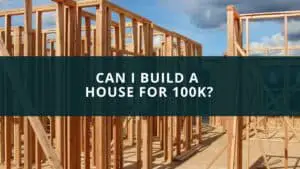Homes have gotten bigger in recent years, and with that, bathrooms have also become more elegant and numerous. Gone are the days when everyone in a house only shared one bathroom. Now, most homes even have more bathrooms than bedrooms. So, why do houses have more bathrooms than bedrooms?
Houses have more bathrooms than bedrooms to provide sufficient options for people during peak usage hours. It’s only in recent times that extra bathrooms have become an essential feature of the house. Most homes have it because of future needs, house sizes, improve the resale value, and privacy.
Regardless, it’s not every home that has more bathrooms than bedrooms. The appropriate number of bathrooms for a house depends on several unique factors. Here, we discuss the reasons for more bathrooms than bedrooms in modern homes.
Quick navigation
When Did Homes Start Having Many Bathrooms?
Bathrooms weren’t originally part of the house. In fact, indoor plumbing wasn’t popular until around World War II. This meant that bathrooms or water running inside the house weren’t common. This isn’t surprising; plumbing materials were very costly and heavy. They were mostly cast iron which was quite heavy, and the copper pipes were equally expensive. Thus, most homes had their bathrooms outdoor, and the bathrooms served simple functions and nothing exceedingly spectacular. But after the World War, bathrooms started appearing inside homes, and some homes even had a second bathroom.
By the 60s, the modernization of plumbing materials had peaked, and bathroom construction also improved. There was now plastic PVC piping, showers, lighter bathtubs, etc. All these offered people many options for bathroom construction, and the cost was also falling. By the 80s and 90s, a house having multiple bathrooms had become quite common. Most real estate ads started listing the number of beds and baths in a house so people could determine if it meets their needs.
As the number of bathrooms began increasing, the quality of construction also increased. People were spending more time and money not just on building the bathroom but on the skincare products they used inside. Modern bathrooms now serve more than simply hygiene functions. They have become crucial parts of the house in terms of luxury. The popularity of bathrooms means it now takes more space in the house, and some homes even leave extra space for the possibility of adding a new bathroom later in the future.
How Many Bathrooms Should A House Have?
Determining the number of bathrooms a house should have will depend on several factors. These include the number of bathrooms you need presently and the number of bathrooms you’ll need in the future. It could also depend on your plan for the house, such as whether you’re planning to sell it since many buyers won’t mind having extra bathrooms. The number of floors the home has can also determine the bathrooms in the house. Every floor should at least have its bathroom. The standard is to have two bathrooms for every three bedrooms. But that’s gradually changing, with several homes now having more bathrooms than bedrooms.
Why Homes Have More Bathrooms
There are several reasons to have more bathrooms than bedrooms without appearing like it’s a waste of space. These include:
1. Future Plans and Needs
Most households build extra bathrooms to account for future needs. Although two bathrooms for a 3- or 4-bedroom house might be enough initially, It can be more complicated once the children become older. If the kids are of the opposite sex or spend a lot of time in the bathroom, sharing the bathroom can get inconducive and would most likely be one of the issues that lead to conflicts among the kids. Even those who don’t have plans for kids can still need extra bathrooms when they have guests over. Hence, most families avoid the stress of sharing bathrooms by buying or building homes with sufficient bathrooms for their future needs.
2. Houses Sizes
Homes are also increasing in size over time. The average size of US homes is now around 2,493 square feet, much bigger than the 1,600 square feet in 1973. The bigger homes are a result of an increase in disposable income. With homes getting bigger, the number of bedrooms is also increasing, and so is the number of bathrooms that’ll serve the rooms. Most people now demand more bathrooms in homes, and builders have no choice but to construct something that matches the desire of the buyers.
3. Privacy
Privacy has become a more important ideal today than it ever was. Whether it’s with data or personal space, more people want to maintain their privacy, and that’s becoming evident in the construction of homes. Gone are the days when houses usually have one master bathroom and another bathroom that serves the rest of the rooms. Nowadays, it’s common to find homes with en-suite bedrooms, which means every bedroom has its bathroom. Also, there’s usually an extra bathroom specifically meant for visitors. This ensures that visitors don’t have to go through the bedroom before using the bathroom. Thus, these houses have one more bathroom than the bedroom. The bathroom for visitors is usually a powder room as it might not have a shower.
4. Resale Value
The demand for additional bathrooms has increased over time, and most homebuilders now consider this when building. However, unlike other rooms in the house, such as the study, rec room, or home office, which is possible to have by simply repurposing another room, bathrooms are difficult to add or remove. Thus, most people add more bathrooms based on the possibility of a future need or if they have to sell the property. An extra bathroom could boost the resale value of the property.
In Conclusion
Having more bathrooms than bedrooms might seem like a waste of space. After all, people won’t sleep inside bathrooms. But the importance of having extra bathrooms become evident when you have more people at your house. Before you know it, those unnecessary bathrooms become what makes staying in your house convenient.




